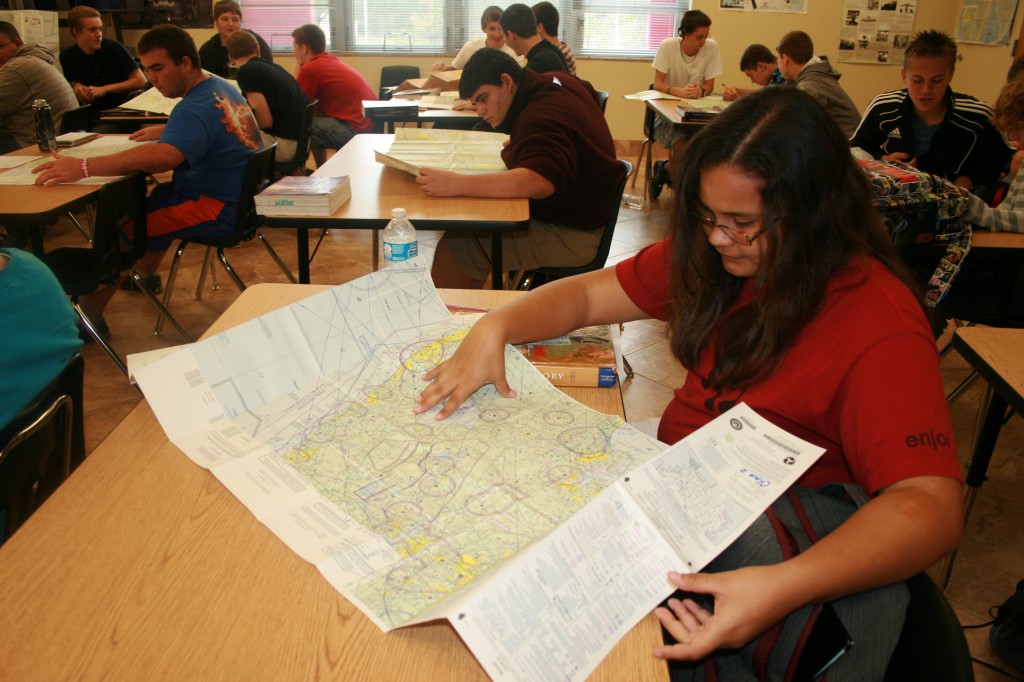
Sixteen-year-old Stormy Foxen dreams of flying an airplane one day. So does classmate Coral Barron, 15, who hopes to join the U.S. Air Force after high school.
No flying for Ryan Long, though. “I get sick,’’ said the 14-year-old freshman, who, instead, has set his sights on a career in aircraft maintenance.
All three teens are working toward their goals and, in some cases, may reach them even before they graduate, earning pilots’ licenses or obtaining technical certifications while students at Central Florida Aerospace Academy.
Located at Lakeland Linder Regional Airport, the school is one of 63 career academies in Polk County and 1,900 statewide. Collectively, the programs are training more than 150,000 students for careers in art and design, police and fire service, information technology, cyber security and dozens of other fields.
Quickly and quietly, academies have become one of Florida’s fastest growing school choice options.
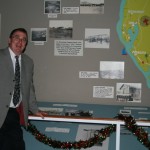
“We’re building programs that give kids a well-rounded experience and one that they enjoy,’’ said John Small, director of Workforce Education for Polk County Public Schools. “At the same time, we’re providing a future workforce. I think that can help economic development. It’s kind of like the chicken and the egg.’’
In the 2007-08 school year, there were 19,868 students enrolled in 246 career academies, according to the Florida Department of Education. That same year, legislation led by now Senate President Don Gaetz, R-Niceville, went into effect, putting the high school programs on equal footing with other advanced academic offerings and opening the door for more programs.
By 2010-11, according to the most recent report available, enrollment reached 154,327 in 1,298 academies. Over the same span, the number of students earning industry certifications each year rose from 803 to 20,644.
More growth is coming. In 2011, lawmakers mandated that each school district put an academy in at least one middle school, ensuring the career and technical pipeline will get bigger. Last school year, there were 56 middle school academies registered with the state.
The idea behind career academies is to mix challenging curriculum with specialized tracks of study that include industry certifications. The goal: Get more students to graduate high school and, at the same time, get them into the workforce faster.
Local and state business leaders like the academies. They look at career education in middle and high school as key to creating more jobs and more qualified applicants.
School districts benefit, too. The state looks at the number of national industry certifications when calculating school grades and per-student funding. The academies are eligible for additional federal dollars earmarked for career and technical education.
Also, such schools often receive monetary support from the industries that partner with them. For example, the Aerospace Academy, which opened in 2009, netted $1.4 million from NASA to develop curriculum. That relationship led to field trips to Kennedy Space Center and, most recently, a live chat between students and astronauts during one of the last launches, Small said.
The academy also received a $7.5 million donation from James C. Ray, a World War II Army pilot from California who became a successful businessman and philanthropist. The money went toward the construction of a three-story, state-of-the-art school building with a futuristic-looking sign straight from the Jetsons.
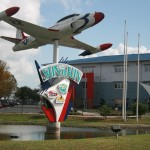
Inside the school, there are computer labs, flight simulators, a media center and a $35,000 3-D printer, paid for by a federal grant. Students use the machine to create airplane wings they test in a high-tech wind tunnel.
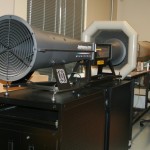
The academy offers regular high school classes, such as science, social studies and math. But students are introduced to four specialized tracks of study: engineering, avionics, aerospace and airframe and power plant maintenance.
They also develop special relationships with local businesses that partner with the school, including Sun ‘n Fun, a Lakeland organization that puts on annual air shows and offers scholarships for students to help pay for their pilot’s license.
Certifications include production technician and avionics. The academy is waiting for approval from the Federal Aviation Administration to offer a certificate in airplane maintenance, said the school’s principal, Keith Smith.
Once certified, some academy students can go from graduation to a good job, he said.
“I really think it’s fantastic,’’ he said. “Especially for industries where it’s going to be needed. There’s going to be a huge shortage in aviation mechanics and electronics (due to downsizing of the military, where many such workers were trained). And where there is a shortage, pay is going to go up.’’
The U.S. Department of Labor estimates the need for airplane mechanics will grow in the next decade by about 6 percent. Employees average about $25 an hour or $53,000 a year.
To help provide a well-rounded academic experience, academy students can participate in band, sports and other activities through Kathleen High, a traditional high school in Lakeland affiliated with the academy.
This year, the academy has 251 students – its largest enrollment to date. Only about 25 are girls.
“I think it’s better,’’ said Coral, who hopes to start her flight training this summer. “Less drama.’’
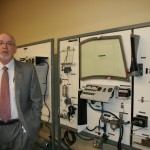
The school has room for 500 students in the new building, which opened in March 2011. Smith expects a waiting list in three years.
Career education has evolved far from its roots.
David Barnes, executive director of career and technical education in Pinellas County, Fla., helped start one of the school district’s first career academies in 1993. Traditionally, career education was tied to vocational and technical programs, he said, but “we’ve gone well beyond that.’’
His district features 28 academies with programs devoted to wellness and medical fields, international cultural, finance, culinary arts and business administration, to name a few.
The growth is due, in part, to economic development, he said. The school district has partnered with WorkNet Pinellas and industry leaders to ask, “Where do you see the jobs?’’
What’s hot? Biomedical and biotech fields, manufacturing and production, and alternative energy, Barnes said.
This school year, Clearwater High in Pinellas is transforming the entire school into four career academies, starting with grades nine and 10. Students will choose from Business, Leadership & International Studies; Science, Technology, Engineering, Agriculture & Mathematics; Fine Arts & Media Education; and Sports, Hospitality and Recreational Education.
The school’s website touts studies that show students in such settings outperform their peers in traditional schools. A 2010-11 report from the state found students who participate in academies and earned industry certifications were more likely than their non-academy counterparts to take AP and dual enrollment courses, log fewer absences and stay out of trouble. They also had higher grade point averages and graduation rates.
Statewide, certification rates are on the rise after a brief drop. In 2007-08, 86 percent of students who attempted to earn certifications did so. That number dropped to 55 percent in 2009-10, but rose to 73.6 percent in 2010-11.
For Pinellas County students, the career academy concept has been a game-changer, Barnes said. “It hooks them, gives them a little more relevance,’’ he said. Teachers seem to like working in an academy atmosphere, he said, and students seem to be more engaged.
“It’s just more fun,’’ Barnes said.



Georgia has been starting “college and career academies” as charter schools since 2000. While we have many fewer “academies” than Florida, all of ours are true charters with autonomous governing boards and, thus, stronger private sector partnerships and external funding streams. The relevance factor and raw number of business partners are both out of sight. We connect work ethic to course grades, so students who don’t don’t arrive on time don’t make good grades, no matter what their test scores are (a lesson our business partners insisted we get across). Check out your neighbor to the north!
We will check out Georgia, Russ! And we appreciate the comments. Charter school academies seem like a natural progression in the school choice movement and for workforce development. Thanks for taking the time to read our blog. Feel free to contact us with more ideas.
[…] Career Academies: The New School Option […]